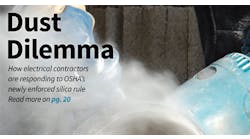In our previous issue, we said you must use your work order system to provide the data for the reports your computerized maintenance management system (CMMS) can produce. How can you make this work?
First, determine what information management needs and whether it's practical to collect the data from which to generate that information. You may need to engage in an iterative process with senior managers until you can arrive at what information is practical and cost-effective yet meets their needs. Then, determine if your CMMS can provide reports with this information. If not, contact your CMMS vendor.
Tailor the work orders. It’s critical to understand that the work order isn't an add-on — it's the core. It's what provides the input needed to generate the desired reports. Thus, redesign your work processes and your work orders so the required data can be accurately collected and make it back to the CMMS.


